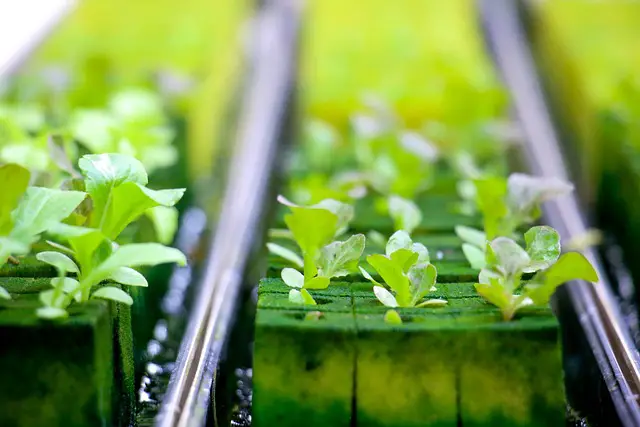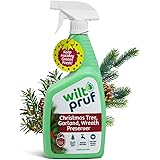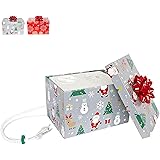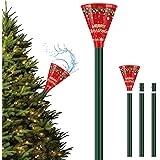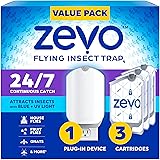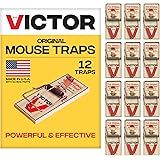Are you interested in learning about the way to start seeds for hydroponics successfully? Hydroponic gardening is an incredibly rewarding and efficient way to grow plants without soil. For your hydroponic garden to be successful, you must start your seeds off on the right foot.
In this blog post, you will be able to know the best techniques for how to start seeds for hydroponics, so you can get the most out of your garden. Read on to learn more!
Choose the Right Containers
When it comes to starting seeds for hydroponics, it is important to choose the right containers.
The ideal container should be made of a non-porous material that will not absorb moisture or nutrients, as well as provide adequate drainage.
Common materials used for hydroponic seed starting include plastic and fiberglass.
When picking your containers, it is also critical to take into consideration the size of the plants you plan on growing.
Make sure your containers are big enough to accommodate their growth and root systems.
Another factor to consider when selecting your containers is airflow. Good air circulation around the roots of your plants is essential for proper nutrient absorption. If your containers lack air flow, it can result in a decrease in the overall health of your plants.
Some seed starting containers come with built-in ventilation holes, while others may need additional perforations or small openings to promote proper air flow.
Finally, if you are starting multiple types of plants, it’s best to use individual containers for each type. This will help prevent the spread of disease and provide more space for the plant’s root systems to develop and grow.
Prepare Your Containers
Before you sow your seeds, it is important to make sure your containers are properly prepared.
It is recommended to use non-toxic, food-grade containers for hydroponic seed starting.
Depending on the size and type of container you choose, you will need to add a few holes to the bottom for drainage.
The container should also be filled with a sterile soilless growing medium that is specifically designed for hydroponics.
These mixes contain no soil or fertilizer, but may contain organic matter such as compost, coco coir, or perlite. These mixes are available at most hydroponics stores or online.
If your growing medium needs to be moistened, make sure to do so before sowing your seeds.
Place a thin layer of the moistened mix over the bottom of the container and make sure to tamp it down so that it is level and free of air pockets. This will ensure that the seeds have enough contact with the medium for proper germination.
Finally, you will want to sterilize the containers with a solution of water and a few drops of bleach before sowing your seeds. This will help prevent any potential diseases from occurring during the germination process. Once you have done this, your containers are ready for the next step!
Sow the Seeds
Once you have prepared your containers and hydroponic medium, it is time to sow the seeds.
Before you begin, make sure to read the instructions on the seed packet.
Different types of seeds require different planting depths. Generally, you will want to plant the seeds at a depth of 2-3 times the size of the seed.
If you are using a plug tray or starter tray, each cell should be filled with hydroponic medium. Use a spoon or scoop to fill each cell up to 1/4 inch below the top edge.
Once the cells are filled, you can press the seeds into the soil. This will help them establish contact with the moisture. Make sure to plant several seeds per cell in case some of them do not germinate.
If you are using a hydroponic grow system such as a wicking bed or deep water culture, the process is slightly different. You will want to place each seed on top of the growing medium and gently press it into place. Cover the seed lightly with a thin layer of the growing medium and then lightly mist the surface with a spray bottle.
When all of your seeds have been planted, cover them with a thin layer of plastic wrap or cover them with a lid if using a plug tray. This will help maintain humidity and ensure that your seeds will germinate properly. After the seeds have been planted, make sure to keep the soil moist but not saturated.
Water the Seeds
Once you have placed the seeds into the containers, it is important to water them properly. It is best to use a pH-balanced hydroponic solution when watering the seeds. This ensures that the seedlings are getting the necessary nutrients they need to grow.
You should also make sure that the water has the right temperature. Too hot or too cold water can prevent the seeds from germinating and result in poor growth.
When watering, it is important to provide enough water to keep the soil moist, but not too much water to cause overwatering and root rot. If you’re using a tray to water your plants, be sure to remove any excess water that pools in the tray after a few minutes.
If you’re using a hydroponic system, make sure to adjust the water flow accordingly so that the roots of the seedlings do not become over-saturated. As your seedlings grow, you may need to increase the frequency of watering as well as the amount of water you give each plant.
Once your seedlings have established themselves, you can reduce the frequency and amount of water needed.
Keep an eye on your plants and adjust your watering schedule as needed. With proper care and attention, you can ensure your hydroponic garden will thrive!
Place the Containers in the Right Location
After you’ve planted the seeds, it’s important to put them in the right location.
The best location for hydroponic seedlings will depend on what type of system you’re using and what type of plants you’re growing.
In general, hydroponic seedlings need an environment that is warm, humid, and free of drafts. Temperatures should be kept between 65-75°F (18-28°C).
You also need to make sure that the light source is not too intense or too far away.
If you’re using a water-based hydroponic system, you should place the containers in a tray of water with a submersible pump. Make sure to keep the water at the right temperature and check it regularly.
If you’re using an air-based hydroponic system, such as aeroponics or NFT, you should place the containers in a warm and humid location. Make sure the location is free of drafts and has adequate light for your plants.
No matter what type of system you’re using, make sure that the containers are secure and won’t fall over.
Also, be sure to label each container with the name of the plant so you know what you’re growing.
By following these tips and ensuring that your seedlings have the proper environment, you can increase your chances of successful hydroponics gardening.
Check on the Seeds Regularly
It’s important to check on your seeds regularly once you’ve planted them.
You want to make sure that they are getting enough moisture and that the temperature is correct.
If you’re using a grow light, you should adjust the height of the light regularly to ensure the plants get the right amount of light.
Additionally, you should monitor the growth of your seedlings and look for any signs of pests or disease.
If you find any problems, you’ll need to take action right away to prevent further damage.
For example, if there are signs of pests, you’ll need to use an insecticidal soap or other natural pest control measures.
If you notice signs of disease, remove the affected plant and make sure the surrounding area is free from any diseased plant material.
Finally, be sure to thin out your seedlings when they start to crowd each other. Doing so will ensure that each plant has enough room to grow and mature properly.
By following these tips and checking on your seeds regularly, you’ll be well on your way to successfully growing hydroponic plants.
Transplant the Seedlings
Once your seeds have germinated and the seedlings are strong enough, it’s time to transplant them into your hydroponic system.
Before you start, make sure that your hydroponic system is properly set up and functioning correctly.
The best way to transplant seedlings is to use a net pot. This is a small container with a built-in mesh lid that allows the roots to get plenty of oxygen.
To transplant, carefully remove the seedling from its current pot and place it into the net pot. Make sure not to damage the root system, and fill the net pot with your nutrient solution so that the seedling is completely submerged.
After you have transplanted the seedling, make sure to monitor it closely. Keep an eye on the temperature, pH, and nutrient levels in the hydroponic system.
Your seedlings may need some time to adjust to their new environment, so make sure to give them some extra TLC during this transition period.
If everything looks good after a few days, you can continue with your hydroponic growing plan.
Congratulations! You’ve successfully started seeds for hydroponics and are ready for the next steps in the process.
Frequently Asked Questions (FAQs)
What type of containers should I use for starting seeds for hydroponics?
The best containers for starting seeds for hydroponics are ones that are lightweight and have a drainage hole at the bottom. Plastic, Styrofoam, and peat pots are all great options. Avoid using containers made of metal or ceramic, as they can be too heavy and cause root damage.
What is the best temperature to start seeds in hydroponics?
Most seeds germinate best between 18-28°C (65-70°F). Keeping your seed trays at a consistent temperature is important for successful germination.
How do I know when my seeds have germinated?
Once your seeds have germinated, you will notice small green leaves emerging from the soil. This is a sign that your seed has successfully germinated and is ready to be transplanted.
What is the best way to water my seedlings?
A: It is best to use a watering wand or spray bottle to water your seedlings gently. Avoid pouring water directly onto the seedlings as this can wash away the soil and damage the roots.
Wrapping Things Up
Learning how to start seeds for hydroponics doesn’t have to be intimidating. With the right containers, preparation, and location, you can successfully grow hydroponic seedlings that will provide you with an abundance of fresh produce. After reading this blog post, you should have a better understanding of what it takes to get started with hydroponic gardening.
Just remember to check on your seedlings regularly and provide them with the best environment possible for their development. With some patience and dedication, you can reap the rewards of a successful hydroponic gardening experience.
Auto Amazon Links: No products found.
Perfect Plants Christmas Tree Saver 8oz. | Easy Use Xmas Tree Preserver Food | Have Healthy Green Christmas Trees All Holiday Season
$9.97 (as of November 25, 2025 23:26 GMT +00:00 - More info- Product prices and availability are accurate as of the date/time indicated and are subject to change. Any price and availability information displayed on [relevant Amazon Site(s), as applicable] at the time of purchase will apply to the purchase of this product.
Wilt-Pruf® Christmas Tree/Cutting Preserver Spray |Preserves Christmas Trees, Wreaths, Garlands, Cuttings and Carved Pumpkins | Reduces Needle Drop | Keeps Cut Trees Fresh Longer | Natural (32 oz)
$21.99 (as of November 25, 2025 23:26 GMT +00:00 - More info- Product prices and availability are accurate as of the date/time indicated and are subject to change. Any price and availability information displayed on [relevant Amazon Site(s), as applicable] at the time of purchase will apply to the purchase of this product.
Christmas Tree Watering Funnel – 39 Inch Adjustable 3-Section Design, Reusable & Spill-Free, Easy Watering for Real Christmas Trees
$10.70 (as of November 25, 2025 23:26 GMT +00:00 - More info- Product prices and availability are accurate as of the date/time indicated and are subject to change. Any price and availability information displayed on [relevant Amazon Site(s), as applicable] at the time of purchase will apply to the purchase of this product.
HoHoHoH2o Automatic Christmas Tree Watering System Device, Santa’s Tree Helper Keeps Your Christmas Tree Healthy and Fresh, Refillable 2.5 gallons Capacity Box - Silver/Festive
$99.95 (as of November 25, 2025 23:26 GMT +00:00 - More info- Product prices and availability are accurate as of the date/time indicated and are subject to change. Any price and availability information displayed on [relevant Amazon Site(s), as applicable] at the time of purchase will apply to the purchase of this product.
IPOOLTENG Christmas Tree Watering Funnel 3 Tube 1 Funnels 40 Inch - 3 Section Plastic Christmas Tree Funnel Waterer, Long Funnels for Watering Trees, No More Bending to Water
$13.59 (as of November 25, 2025 23:26 GMT +00:00 - More info- Product prices and availability are accurate as of the date/time indicated and are subject to change. Any price and availability information displayed on [relevant Amazon Site(s), as applicable] at the time of purchase will apply to the purchase of this product.
Zevo Flying Insect Trap Official Refill Cartridges - Fits Both Zevo Trap & MAX Indoor Fly Trap - Authentic Trap+Lock Technology to Catch Gnats, House & Fruit Flys (4 Official Refill Cartridges)
$14.97 (as of November 25, 2025 14:47 GMT +00:00 - More info- Product prices and availability are accurate as of the date/time indicated and are subject to change. Any price and availability information displayed on [relevant Amazon Site(s), as applicable] at the time of purchase will apply to the purchase of this product.
Traeger Grills Signature Blend 100% All-Natural Wood Pellets for Smokers and Pellet Grills, BBQ, Bake, Roast, 18 lb. Bag
$19.99 (as of November 25, 2025 14:47 GMT +00:00 - More info- Product prices and availability are accurate as of the date/time indicated and are subject to change. Any price and availability information displayed on [relevant Amazon Site(s), as applicable] at the time of purchase will apply to the purchase of this product.
TERRO Ant Killer Bait Stations T300B - Liquid Bait to Eliminate Ants - Bait System - 12 Count Stations for Effective Indoor Ant Control
$10.86 (as of November 25, 2025 14:47 GMT +00:00 - More info- Product prices and availability are accurate as of the date/time indicated and are subject to change. Any price and availability information displayed on [relevant Amazon Site(s), as applicable] at the time of purchase will apply to the purchase of this product.
Zevo Flying Insect Trap & 3 Refill Cartridges - Plug in Fly Trap & Indoor Bug Catcher for Gnats, House & Fruit Flies - Blue & UV Light Technology, Mess-Free Alternative to Bug Zapper
$25.96 (as of November 25, 2025 14:47 GMT +00:00 - More info- Product prices and availability are accurate as of the date/time indicated and are subject to change. Any price and availability information displayed on [relevant Amazon Site(s), as applicable] at the time of purchase will apply to the purchase of this product.
Victor Mouse Traps M150-12, Metal Pedal, Sustainably Sourced FSC Wood, Wooden Mouse Traps, 12 Metal Pedal Traps
$9.79 (as of November 25, 2025 14:47 GMT +00:00 - More info- Product prices and availability are accurate as of the date/time indicated and are subject to change. Any price and availability information displayed on [relevant Amazon Site(s), as applicable] at the time of purchase will apply to the purchase of this product.

